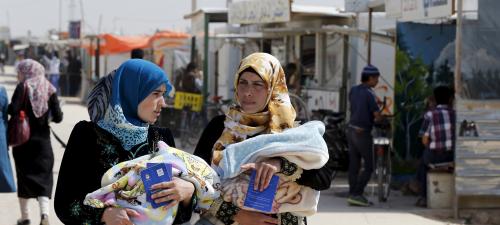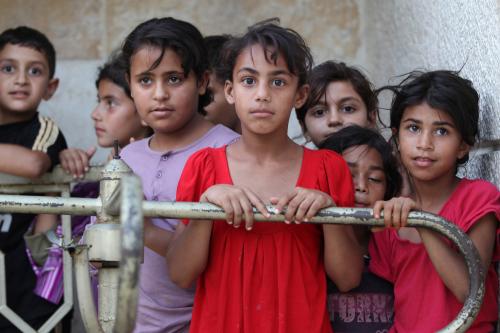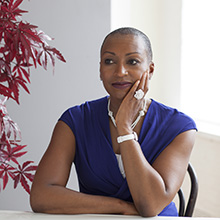The inclusion of “access to justice for all” as part of the internationally agreed Sustainable Development Goals (SDGs) is an important milestone in promoting inclusive growth. It presents a welcomed opportunity to link legal justice with achievement of other SDGs covering human and social development, gender equality, and poverty reduction. And it has prompted much discussion around data and making the development case for investment in access to justice and social services.
One of the key questions in assessing access to justice is, access for whom? Citizen experience with the legal sector varies with income and education levels, minority status, and gender. Access for vulnerable persons is critical because justice provides an important tool for enforcing rights and guaranteeing protections. Justice services can also help hold governments accountable for delivery of basic services, such as health and education.
One way to measure justice gaps is through household surveys. The number of surveys covering issues of access has been increasing rapidly, spreading well beyond the high-income countries where they started. Survey instruments are becoming more sophisticated, and survey sizes are increasing. In 2016 the government of Colombia conducted the largest such survey as a module of its Quality of Life Survey (Encuesta Calidad de Vida), reaching over 50,000 individuals in more than 20,000 households.
While justice remains highly context-specific, data from these surveys suggest some interesting trends:
Women are more likely to face certain types of legal problems
Evidence on whether women or men are more likely to experience legal problems is mixed. What appears clearer is that women are more likely to face certain types of legal problems. One example is family issues, including alimony, child support, divorce, and child custody, as documented by a series of surveys conducted by HiiL innovating Justice (Figure 1). Women in Jordan were more than three times as likely to report family law problems. In Uganda they were 2.5 times more likely, and twice as likely in Tunisia. In the Colombia Quality of Life Survey, the largest gender gap was in family law issues, accounting for one-quarter of legal problems facing women versus 15 percent for men.
Women are also generally more likely to face legal problems in relations with neighbors and access to social safety net benefits. But they were much less likely to report legal problems related to employment, finances, crime, land, and access to public services, likely reflecting their limited economic and social participation.
Figure 1: Percent of persons reporting family law problems, women versus men
Women face numerous obstacles in navigating justice systems
Women’s more limited control over economic assets and labor force participation means they often lack the financial resources to access courts and lawyers. They often lack knowledge of formal institutions and procedures. Restrictive social norms also play a role. Women in Jordan and Tunisia have reported shame, customs, and the fear of revenge as reasons for not seeking access to legal services. Without access to formal justice, women are more reliant on informal networks, such as family and friends, for information and assistance. However, these networks often enforce discriminatory social norms. A qualitative survey of female beneficiaries of legal aid in Jordan found that their families usually discouraged them from reporting domestic violence to the police.
Women are often more highly impacted by legal problems
In Colombia, the severity of impacts of legal problems on women more closely mirrors that of the poor and ethnic minorities than men (Figure 2). Women are often more likely to report serious impacts such as stress-related illnesses, problems with relationships, violence and personal injuries, while men more often report loss of income and time. Women are also more financially dependent on court decisions awarding financial support, for example, those on access to marital property, alimony, and child support, yet they often lack the means to obtain or enforce them. For many women and their families, legal problems and the inability to access justice present social and economic shocks from which recovery is difficult.
Figure 2: Severity of impacts of legal problems
These gaps matter. That women face different types of legal problems than men suggests a combination of legal discrimination, social and economic inequality, administrative bias, restrictive social norms, and exclusion undermine access in different yet complementary ways. The lack of access in turn reinforces these vulnerabilities. Understanding gaps will also help in more accurately targeting key services that may be particularly helpful to women, such as legal aid, self-help, access to alimony and child support, and protection orders. Further analysis of existing data sheds light on gaps in other key areas, including pathways to resolving legal problems, trust in justice institutions, and access to information.
There is still much we do not know about the gender justice gap, such as how gaps shift as economies grow. Regression analyses of survey data in upper income countries suggest gender may become less of a factor in experiencing legal problems. The gender gap in access to justice for family law issues, which is considerable in many middle and lower income countries, decreases considerably. Instead, factors like income and education levels, minority status, disability, and geographic location appear more influential in determining gaps in access. Gender is just one dimension of vulnerability in accessing justice, but it remains important to understand how gender interacts with the other factors.









Commentary
Measuring the gender justice gap
June 21, 2018